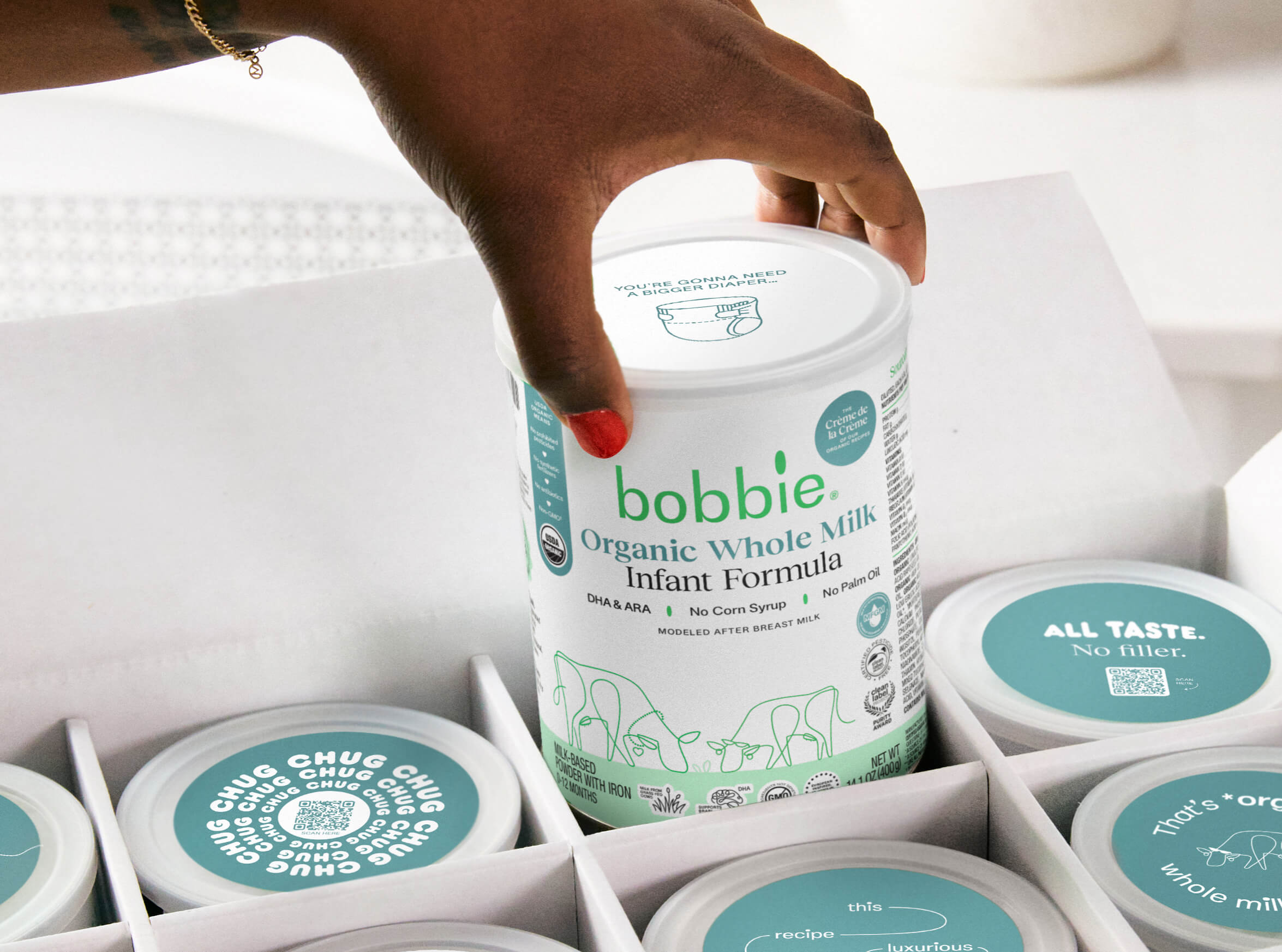Published September 13, 2024

Combo Feeding Schedule: A Comprehensive Guide to Combining Breastfeeding and Bottle Feeding
Combo feeding, also known as mixed feeding or supplementing, is a flexible approach to nourishing your baby by combining breastfeeding with bottle feeding with formula. This method can offer the best of both worlds, providing the unique benefits of breastfeeding and formula feeding. Whether you're considering combo feeding to balance work and parenting, to ensure your baby is getting enough nourishment, or to introduce flexibility for caregivers, establishing a solid combo feeding schedule is key.
What is Combo Feeding?
Combo feeding involves feeding your baby with both breast milk and infant formula. This can include a mix of breastfeeding directly, offering expressed breast milk, and supplementing with a bottle of formula. The approach to combo feeding can vary depending on your needs and lifestyle, but the goal is always to ensure your baby receives adequate nutrition while maintaining a healthy breast milk supply.
Why Consider Combo Feeding?
There are several reasons parents may choose to start combination feeding:
- Flexibility for caregivers: Introducing bottles allows other family members or caregivers to help with feeding, giving you more flexibility.
- Support for breastfeeding challenges: If you experience difficulties such as low milk supply, nipple pain, or latch issues, mixed feeding can provide a solution that supports your baby’s nutritional needs.
- Gradual weaning: Combo feeding can be an excellent way to gradually transition from breastfeeding to formula feeding if that's your goal.
Creating Your Combo Feeding Schedule
Developing a combo feeding schedule that works for you and your baby involves considering factors such as your baby's age, appetite, and specific nutritional needs. Here's a suggested approach to help you get started:
- Determine Feeding Times: For newborns, a feeding schedule typically involves feeding every 2-3 hours, whether breastfeeding or formula feeding. As your baby grows, the intervals may extend slightly. To establish a schedule, observe your baby's natural feeding patterns and try to align the combo feeding with those cues.
- Decide on the Balance Between Breast and Bottle: Start by deciding how many feeds will be breastfeeding versus formula feeding or feeding pumped milk. For instance, you might breastfeed in the morning and at night, and introduce formula feeds during the day. This can help maintain your breast milk supply while ensuring your baby is comfortable with the bottle.
- Introduce Combination Feeding Gradually: When you decide to introduce combination feeding, start gradually. Begin by replacing one breastfeeding session with a bottle of formula or expressed breast milk. Observe how your baby responds and adjust accordingly.
- Monitor Milk Amounts: It's essential to keep track of the amount of breast milk and formula your baby consumes to ensure they’re getting enough nutrition. Babies typically need around 24-32 ounces of milk per day during the 1st year, but this can vary depending on age, weight, and individual needs.
- Offer Both Breast and Bottle During a Feeding Session: To make the transition smoother, you can offer a bottle after breastfeeding or vice versa. This approach can help your baby get used to both breast and bottle feeding and prevent any resistance to one method.
- Incorporate Expressed Breast Milk: Expressed breast milk can be a great way to introduce bottle feeding before beginning to use formula. Pumping and storing milk can also help you maintain your breast milk supply while offering the convenience of a bottle feed.
- Adjust as Needed: Every baby is unique, and their needs will change over time. Regularly assess your combo feeding schedule and adjust as needed. If you notice changes in your baby's feeding habits, appetite, or weight gain, consult with your pediatrician for personalized advice.
Bobbie infant formulas are clean, EU-style infant formulas that meets all FDA requirements. They are complete nutrition, milk-based powder, modeled after breast milk and is easy on tummies. They are all non-GMO and do not have corn syrup, palm oil, or maltodextrin. Shop Bobbie today!
Shop Bobbie Baby Formula

Tips for Successful Combo Feeding
- Consult with a Lactation Consultant: Before starting combination feeding, consider talking to a lactation consultant. They can provide expert guidance on maintaining breast milk supply, bottle-feeding techniques, and more.
- Choose the Right Bottles: When introducing bottles, choose ones that mimic the shape and feel of a breast nipple (gradually sloped to a wider base) to help ease the transition for your breastfed baby.
- Use a Consistent Routine: Babies thrive on routine, so try to feed at the same times each day. A consistent schedule can help regulate their hunger cues and create a more predictable feeding pattern.
- Maintain Skin-to-Skin Contact: Even if you are supplementing with formula, maintaining skin-to-skin contact during feeding sessions can help strengthen the bond between you and your baby, much like breastfeeding does.
- Watch for Hunger Cues: Be attentive to your baby’s hunger cues, such as rooting, sucking on their hands, or becoming fussy. This will help you determine when to offer breast milk or a bottle.
- Gradually Increase Formula Feeds: If your goal is to transition to more formula feeding, gradually increase the number of bottles of formula while decreasing breastfeeding sessions. This approach helps your body adjust its milk production without causing discomfort.
Common Challenges and How to Overcome Them
- Nipple Confusion: Some babies may struggle to switch between breast and bottle due to differences in how they suckle. To minimize confusion, introduce combination feeding gradually and consider using paced feeding techniques to help mirror the experience of feeding at the breast while using a bottle.
- Reduced Breast Milk Supply: If you’re concerned about maintaining your breast milk supply, pump after bottle feeding sessions or at regular intervals. This can help stimulate milk production and ensure a steady supply.
- Refusal of Bottle or Breast: Some babies may initially resist the bottle or breast. Patience and persistence are key. Try offering the bottle when your baby is not overly hungry or upset, and have someone else introduce it to create a new association.
When to Seek Professional Guidance
If you encounter challenges such as a significant decrease in milk supply, your baby refusing both breast and bottle, or concerns about your baby’s growth and nutrition, reach out to a lactation consultant or your child’s pediatrician. They can help you troubleshoot specific issues and offer tailored advice to support a successful combo feeding journey.
Sign up to get the scoop on feeding, sleep, poop, and so much more. By singing up for email, you are to receive marketing emails from Bobbie and can manage your email preferences or unsubscribe at anytime

Your go-to resource for all things new baby.
Combo Feeding with Confidence
Creating a combo feeding schedule allows you to combine the benefits of breastfeeding with the flexibility of bottle feeding. With the right balance of breast milk and formula feeds, you can ensure your baby receives the nutrients they need while accommodating your family’s unique needs. Remember, every baby is different, and the key is to find a schedule that works best for you and your baby’s growth and development.
By embracing a flexible and patient approach, you can successfully introduce combination feeding, supporting both your baby’s health and your well-being.
Bobbie infant formulas are clean, EU-style infant formulas that meets all FDA requirements. They are complete nutrition, milk-based powder, modeled after breast milk and is easy on tummies. They are all non-GMO and do not have corn syrup, palm oil, or maltodextrin. Shop Bobbie today!
Shop Bobbie Baby Formula

The content on this site is for informational purposes only and not intended to be a substitute for professional medical advice, diagnosis or treatment. Discuss any health or feeding concerns with your infant’s pediatrician. Never disregard professional medical advice or delay it based on the content on this page.




































